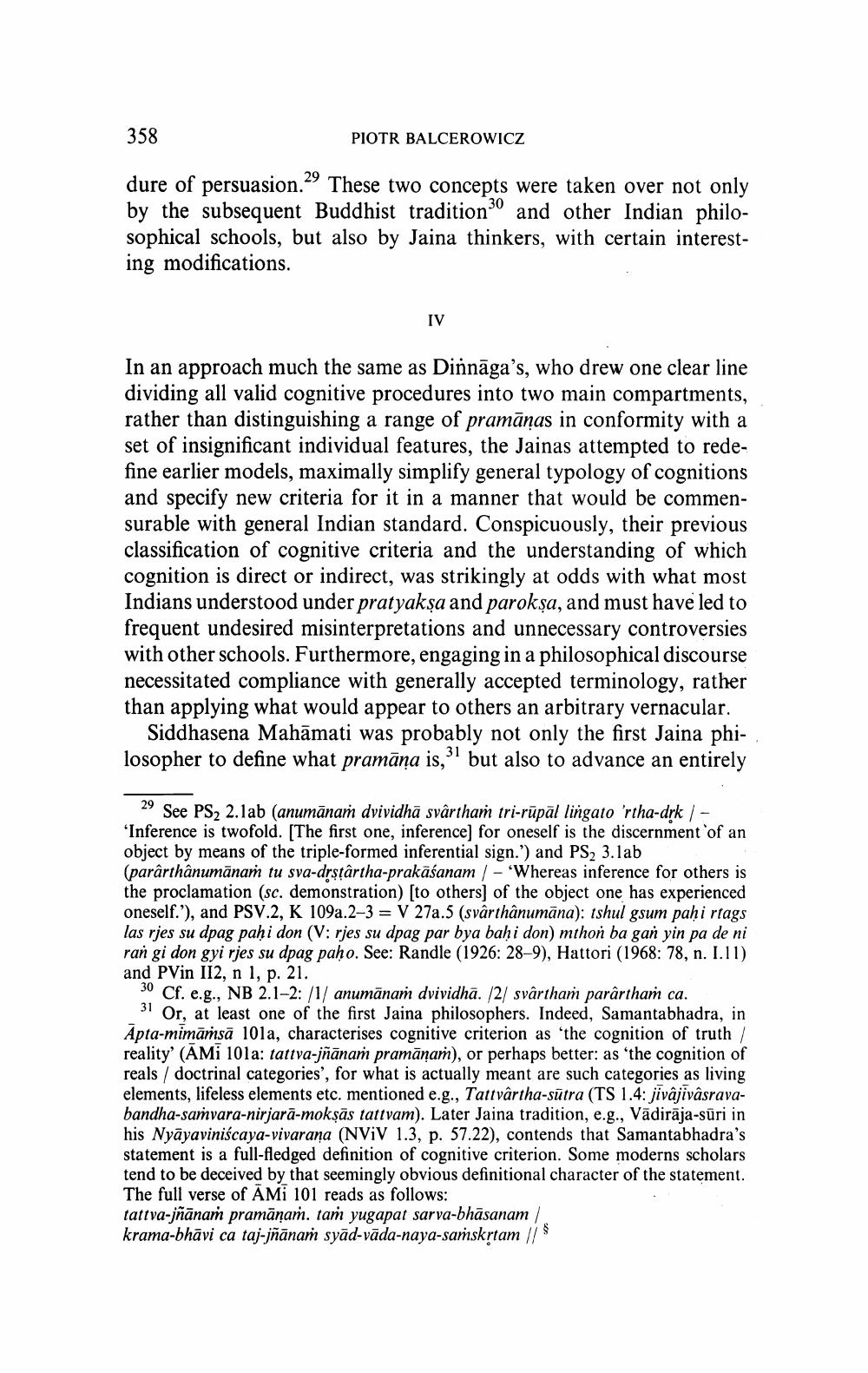________________
358
PIOTR BALCEROWICZ
dure of persuasion.29 These two concepts were taken over not only by the subsequent Buddhist tradition and other Indian philosophical schools, but also by Jaina thinkers, with certain interesting modifications.
IV
In an approach much the same as Dinnāga's, who drew one clear line dividing all valid cognitive procedures into two main compartments, rather than distinguishing a range of pramānas in conformity with a set of insignificant individual features, the Jainas attempted to redefine earlier models, maximally simplify general typology of cognitions and specify new criteria for it in a manner that would be commensurable with general Indian standard. Conspicuously, their previous classification of cognitive criteria and the understanding of which cognition is direct or indirect, was strikingly at odds with what most Indians understood under pratyaksa and parokşa, and must have led to frequent undesired misinterpretations and unnecessary controversies with other schools. Furthermore, engaging in a philosophical discourse necessitated compliance with generally accepted terminology, rather than applying what would appear to others an arbitrary vernacular.
Siddhasena Mahāmati was probably not only the first Jaina philosopher to define what pramāna is, but also to advance an entirely
29 See PS2 2.1ab (anumānam dvividhā svarthaṁ tri-rūpāl lingato 'rtha-drk / - 'Inference is twofold. The first one, inference) for oneself is the discernment of an object by means of the triple-formed inferential sign.') and PS2 3.lab (parârthânumānam tu sva-drstârtha-prakāśanam / - 'Whereas inference for others is the proclamation (sc. demonstration) [to others) of the object one has experienced oneself.'), and PSV.2, K 109a.2–3 = V 27a.5 (svârthânumāna): tshul gsum paủi rtags las rjes su dpag paḥi don (V: rjes su dpag par bya bahi don) mthon ba gan yin pa de ni ran gi don gyi rjes su dpag paho. See: Randle (1926: 28-9), Hattori (1968: 78, n. 1.11) and PVin 112, n 1, p. 21.
30 Cf. e.g., NB 2.1-2: /1/ anumānam dvividha. /2/ svartham parârtham ca.
31 Or, at least one of the first Jaina philosophers. Indeed, Samantabhadra, in Apta-mimāṁsā 101a, characterises cognitive criterion as 'the cognition of truth / reality' (AMi 101a: tattva-jñānam pramānam), or perhaps better: as 'the cognition of reals / doctrinal categories', for what is actually meant are such categories as living elements, lifeless elements etc. mentioned e.g., Tattvärtha-sūtra (TS 1.4: jivajivásravabandha-samvara-nirjarā-mokşās tattvam). Later Jaina tradition, e.g., Vādirāja-sūri in his Nyāyaviniscaya-vivarana (NVIV 1.3, p. 57.22), contends that Samantabhadra's statement is a full-fledged definition of cognitive criterion. Some moderns scholars tend to be deceived by that seemingly obvious definitional character of the statement. The full verse of ĀMi 101 reads as follows: tattva-jñānam pramānam. tam yugapat sarva-bhāsanam/ krama-bhāvi ca taj-jñānam syād-vāda-naya-sanskrtam // $




